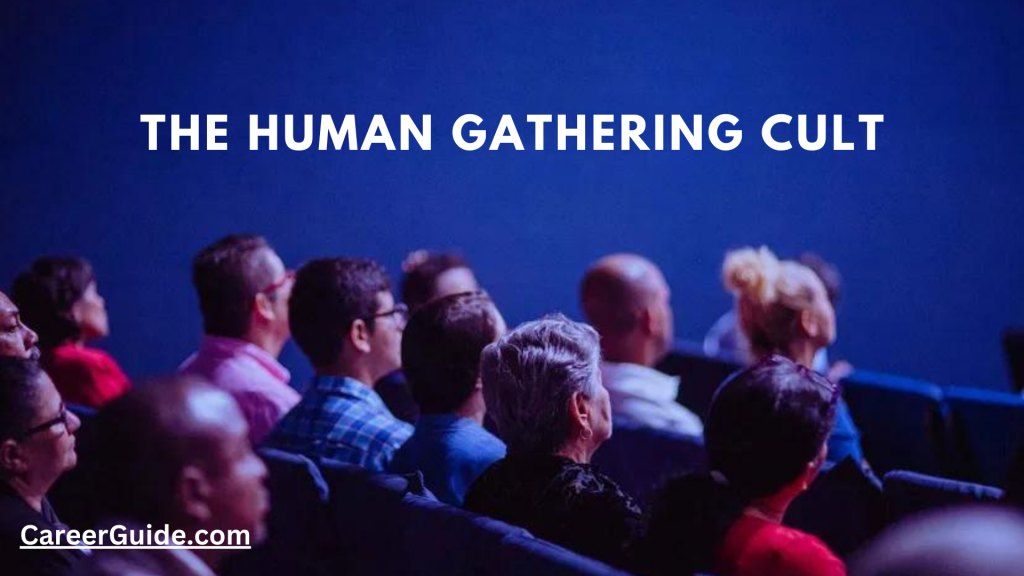Human gathering cults, often shrouded in mystery and controversy, have been a part of human society for centuries. These groups, which can range from benign spiritual communities to dangerous, manipulative organizations, often form around charismatic leaders and involve rituals, beliefs, and practices that set them apart from mainstream society. The allure of such cults, their structure, and the impact they have on their members and broader society is a subject of intense study and debate.
The Appeal of Human Gathering Cults
The reasons individuals are drawn to human gathering cults are complex and multifaceted. At the core, these cults often provide a sense of belonging and identity that is absent in the lives of many of their followers. In a world where social connections can be fleeting and superficial, cults offer a close-knit community with shared beliefs and goals, fulfilling the basic human need for connection and purpose.
Cults often attract individuals who are searching for meaning or answers to life’s big questions. These people may be disillusioned with conventional religious institutions, feel alienated from society, or be experiencing a personal crisis. The cult provides a ready-made belief system and a clear, often simplistic, explanation of the world, which can be highly appealing in times of uncertainty or distress.
Another factor in the appeal of cults is the charismatic leader. These leaders are often highly skilled at manipulation and persuasion, using psychological techniques to create a strong emotional bond with their followers. They may present themselves as possessing special knowledge, divine insight, or extraordinary powers, which can convince followers to place their trust in them completely. This leader-follower dynamic is crucial to the functioning of most cults, as the leader’s authority becomes the foundation of the group’s structure and ideology.
The Structure and Practices of Cults
Cults are typically structured in a hierarchical manner, with the leader at the top, followed by a close inner circle of loyal followers who help enforce the leader’s directives. Below this inner circle are the rank-and-file members, who are often required to follow strict rules and guidelines in their daily lives. These rules can govern everything from personal relationships to diet and dress, creating a controlled environment where the leader’s influence is pervasive.
The practices of cults can vary widely, but they often include rituals, ceremonies, and other forms of group activity that reinforce the group’s beliefs and solidarity. These rituals can be intense and emotionally charged, serving to deepen the members’ commitment to the group and its leader. In some cases, these practices may involve isolation from the outside world, physical deprivation, or other forms of psychological manipulation, which can further entrench the member’s dependence on the cult.
One of the most concerning aspects of some human gathering cults is their potential for abusive or harmful behavior. This can include financial exploitation, emotional and psychological abuse, and in extreme cases, physical harm or even death. The closed nature of many cults can make it difficult for outsiders to intervene or for members to seek help, leading to tragic outcomes.
The Impact of Cults on Society
The impact of human gathering cults on broader society is significant and complex. On one hand, they can provide a sense of community and purpose for their members, fulfilling needs that mainstream society may neglect. However, the secretive and insular nature of many cults can also lead to conflicts with society at large, particularly when the cult’s beliefs or practices are seen as dangerous or extreme.
Cults have been responsible for some of the most shocking events in modern history, including mass suicides, violent confrontations with law enforcement, and large-scale financial fraud. These events often lead to increased scrutiny and regulation of such groups, but the underlying social and psychological factors that give rise to cults remain difficult to address.
Moreover, the portrayal of cults in media and popular culture can sometimes sensationalize or oversimplify the phenomenon, leading to misunderstandings and stigma. While some cults are undoubtedly harmful, others may be more benign, existing on the fringes of society without causing significant harm. Understanding the differences between these groups and the factors that drive individuals to join them is crucial for both policymakers and the public.
Conclusion
Human gathering cults are a fascinating and often troubling aspect of society. Their appeal lies in their ability to offer meaning, identity, and community to individuals who feel lost or alienated. However, the power dynamics within these groups, along with their secretive and insular nature, can lead to abusive and harmful practices. As society continues to grapple with the challenges posed by cults, it is essential to approach the issue with a nuanced understanding, recognizing the complex interplay of psychological, social, and cultural factors that contribute to the rise of these groups. By doing so, we can better protect individuals from harm while also addressing the underlying issues that drive people to seek out such extreme forms of belonging and purpose.
